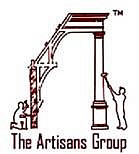ABSTRACT
The Collapsed As-Built Windows Schedule Analysis (AACE® International Recommended Practice 29R-03, Method Implementation Protocol 3.9) is a modeled, subtractive, multiple-base method. It is a retrospective CPM schedule analysis which is typically used to prove entitlement for compensable delay and assess concurrency of delay within a window of time. The analysis simulates the as-built conditions within a schedule window and then delays are removed from the
CPM model. If the forecasted project finish date "collapses" but-for or absent compensable delays, then entitlement for compensable time-related costs can be demonstrated. This article addresses the usage of the Collapsed As-Built Windows protocol and the advantages and disadvantages of the methodology.
1. INTRODUCTION
It is common that an unanticipated event or issue may cause delay and extend the overall completion of a project. It is also common that project stakeholders may dispute the responsibility for a project issue that caused delay and extended the overall completion of a project. A project issue can become contested, cause multiple delays, affect several areas of a project, occur at different points in time, and become intertwined with non-contested issues. To achieve an
equitable resolution of a contested project issue that caused delay, it is imperative for an analyst to answer the following basic questions:
- Who caused the delay?
- Why did the delay occur?
- What impact did the delay cause?
- Where did the delay occur?
- When did the delay occur?
On large and complex projects, the process of evaluating delay issues is further complicated when the schedule file is comprised of numerous process areas/units, thousands of activities with activity groups spanning many months or years, and multiple critical and near-critical paths. One retrospective forensic schedule analysis that can be used to evaluate concurrency and quantify compensable delay is the Collapsed As-Built schedule analysis method applied on a windows basis (AACE® International Recommended Practice 29R-03, MIP 3.9).
2. THE COLLAPSED AS-BUILT WINDOWS ANALYSIS DEFINED
. . .Continue to read rest of article (PDF).
Long International provides expert claims analysis, dispute resolution, and project management services to the Process Plant Engineering and Construction industry worldwide. Our primary focus is on petroleum refining, petrochemical, chemical, oil and gas production, mining/mineral processing, power, cogeneration, and other process plant and industrial projects. We also have extensive experience in hospital, commercial and industrial building, pipeline, wastewater, highway and transit, heavy civil, microchip manufacturing, and airport projects.
©Copyright - All Rights Reserved
DO NOT REPRODUCE WITHOUT WRITTEN PERMISSION BY AUTHOR.











